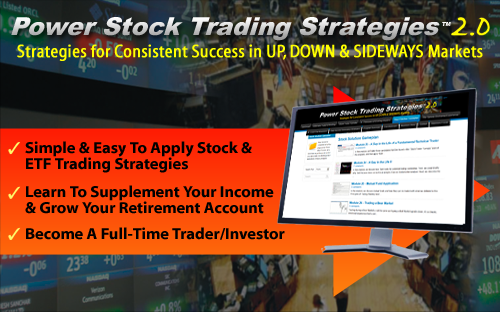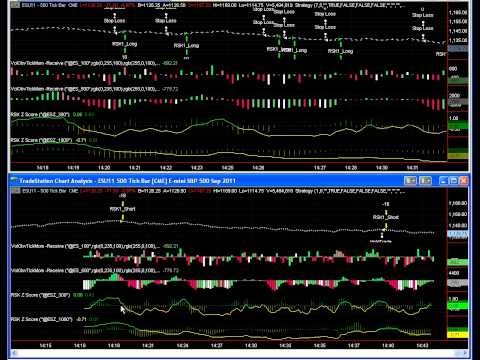Trading Emini Futures and Futures Contracts by David Penn
Post on: 18 Июнь, 2015 No Comment

February 12, 2008 By David Penn
What are e-mini index futures and why should you trade them?
E-mini index futures are miniature versions of the same futures contracts traded by large institutions and hedge funds. E-mini index futures are based on the major market averages and indexes such as the Dow Jones Industrial Average, the S&P 500, the Nasdaq 100 and the Russell 2000 that are widely tracked, followed and commented on by traders worldwide.
Click here to learn how to utilize Bollinger Bands with a quantified, structured approach to increase your trading edges and secure greater gains with Trading with Bollinger Bands® A Quantified Guide.
E-mini index futures offer great opportunities for a wide variety of traders. While the regular full-size futures contract often requires exceptionally high margins for the average trader, the mini-sized versions of the same contract can be traded for a fraction of the margin of the larger contract. The margins for trading a full-sized S&P 500 futures contract can be as high as $20,000 or more, but an e-mini S&P 500 contract has a margin anywhere from $3,000-$5,000 per contract depending on the brokerage firm you use.
Lower margins alone are hardly the only reason why more traders are turning to e-mini futures. As we note below, there are more than a few good reasons why e-mini futures might be the trading vehicle for you. So if you are sick of stocks for the time being, or are tired of ogling options chains, spend some time with our Top 5 Reasons to Trade E-mini Index Futures and see if one (or more) of those reasons start to make more than a little sense to you.
One of the factors that has drawn more traders to e-mini index futures trading are the remarkably low margin rates for traders who open and close their positions over the course of a single session.
Day-trading e-mini index futures now provides a great alternative to day trading stocks, which has become very expensive for many average retail traders in terms of required margins. Whereas a pattern day trader as the regulations call it, must have a margin account of at least $25,000 in order to day trade stocks (which is comparable to the per contract margin for a full-sized e-mini S&P 500 futures contract, for example) an e-mini index futures day trader can trade e-mini index futures for as little as $500 per contract with many online brokers.
You cannot talk about futures
even e-mini index futures without talking about leverage. Leverage is quite frankly the prime attraction of traders to futures, in general, and while the leverage involved in full-sized futures contracts is massive, the leverage for traders trading e-mini index futures is nothing to sneeze at. With the e-mini Dow priced at $5 per point, for example, traders can make much more money in a 200-point day day-trading the mini-Dow than they could by trading the Diamonds or options on the Diamonds with significantly less capital. Leverage, of course, is a double-edged sword, and the same 200+ point day that makes traders want to dance on tables can, when the trades go badly, make traders want to hide under their desks. But used wisely, there is no argument against the fact that leverage is the tool that talented traders use to make real fortunes.
Pure Trading
No more stock screeners or time wasted racking your brain to differentiate between two virtually identical equity trading opportunities. When you are trading e-mini index futures, your world is the market a whole. Focus purely on your technical set-ups, your economic analysis, your contrarian take on sentiment, or whatever it is that helps you decide whether or not stocks as an asset class are likely to advance or decline without having to worry about whether the specific stock vehicle you have chosen will be the best representative of your bullish or bearish take on the market.
Trading a single vehicle such as e-mini index futures means also that many of the ways that stock traders minimize risk
such as diversification and hedging will be much less applicable. Proper position sizing, as well as initial stops, trailing stops and profit targets are among the preferred tools of many e-mini index futures traders when it comes to risk control.
Easy to Follow and Maintain
Following up on the idea of trading e-mini index futures as pure
trading, trading e-mini index futures is often a more simple and straightforward process for many traders compared to trading stocks.
This is especially so when you compare trading a fistful of a few e-mini index futures contracts on a regular basis to trading a portfolio of 10, 15 or even 20 stocks. While the leverage involved (see above) means that traders have less room for error, the fact that there is generally only one vehicle, one set of prices to focus on, is a welcome reduction in trader housekeeping for many.
A large part of trading is finding out what works for you individually. If the idea of having one closing price, one recent high (or low) and one exit point to keep track of sounds appealing, then trading a single leveraged vehicle like the e-mini index futures may be the way for you to go.
So Many Ways to Trade

Because e-mini index futures are based on the major market indices
from the Dow Industrials and S&P 500 to the Russell 2000 any form of analysis that works with these indexes will likely be effective to help traders trade e-mini index futures. Are you a market technician? If so, e-mini index futures play well with moving averages, stochastics, trendlines, Fibonacci retracements, short-term cycles and many other technical tools. If you prefer to look at the markets through a fundamental or sentiment-based approach, then rest assured that the same techniques for determining oversold markets or markets where emotions have run to extremes, will apply to e-mini index futures trading.
E-mini index futures are also a tool for discretionary traders who may want to try and take advantage of specific situations, be they Federal Reserve Board announcements, typical end-of-month bullishness among stock money managers, or other event-driven or cyclical phenomena.
Like everything else in trading
from stocks and ETFs to options and foreign exchange e-mini index futures offer great potential for both
gain and loss. Particularly for traders in the short-term, however,
e-mini index futures have a number of advantages compared to exchange-trading, exchange-tracking funds such as the Dow Diamonds and the S&P 500 SPDRS and the Nasdaq 100s QQQQ. These short-term advantages are exponentially higher if traders are looking to trade markets on an intraday basis.
The growing popularity of e-mini index futures trading means that there are far more resources than ever before to acquaint traders with these trading vehicles, as well as to introduce traders to some of the different ways e-mini index futures can be traded. And over the next few weeks and months, you will see many of these resources here at TradingMarkets.com.
For now, now that from 5-minute intraday bars to swing trading dips and bounces in trends, e-mini index futures combine that familiarity of market indexes with the high-octane leverage of the futures markets to represent a product that many traders who feel they dont quite fit into the world of stock or options trading would do well to learn more about.
David Penn is Editor in Chief at TradingMarkets.com














